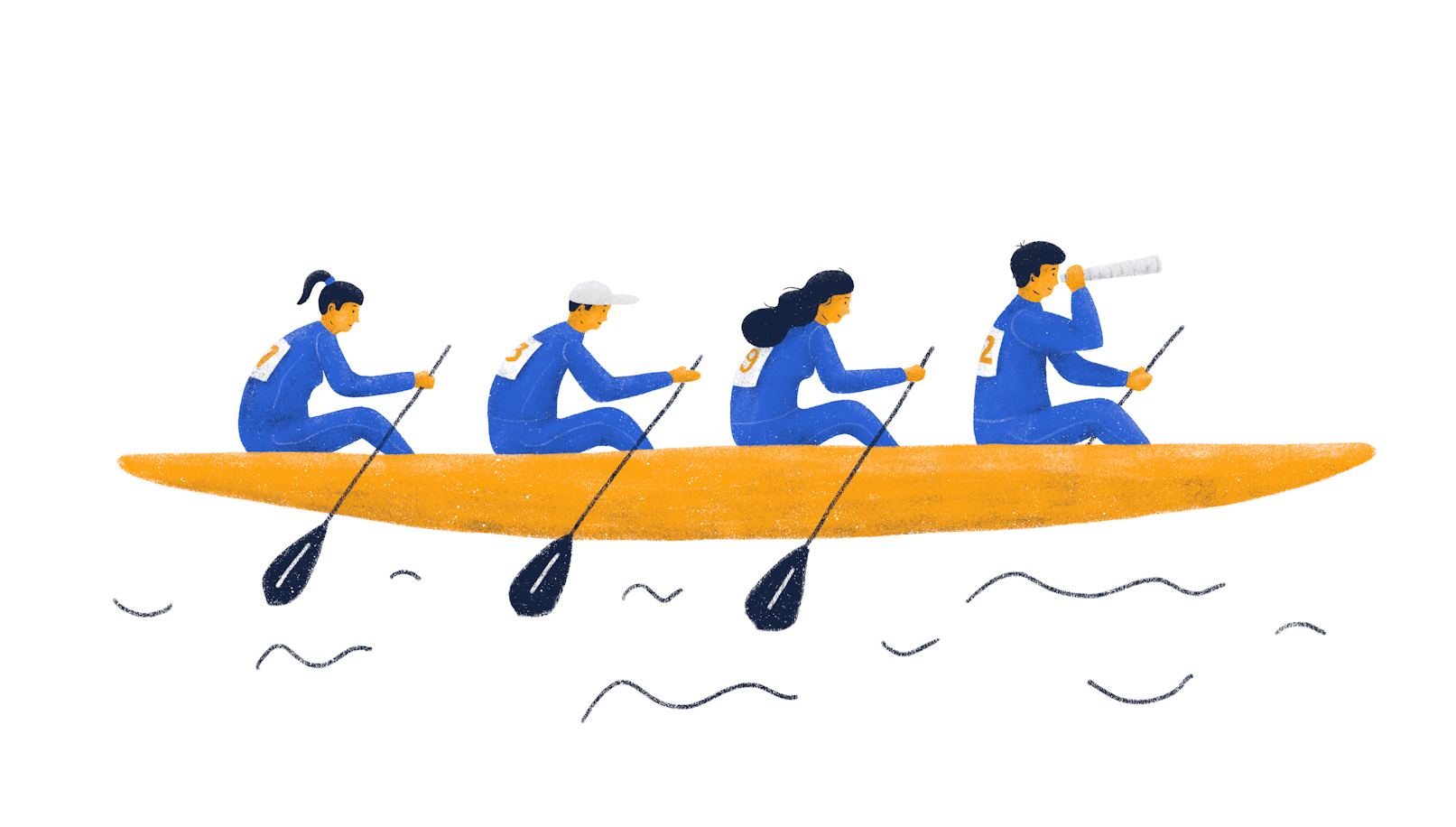Customer Relationship Management (CRM) is a tool used by businesses to manage interactions with current and potential customers. A well-designed CRM system helps businesses streamline processes, build customer relationships, increase retention, improve customer service, and increase profitability.
When designing a CRM system, it is important to consider the needs of the business, the needs of the customers, and the technology available. This article will discuss best practices for CRM design, challenges that may arise, and other relevant considerations.
Best Practices
1. Understand Your Audience: Before designing a CRM system, it is important to understand the needs and preferences of your customers. Conduct surveys, interviews, and other forms of research to gather valuable insights about your target audience.
Before designing a tool as large as a CRM, it's paramount you do as much validation as possible. The cost of a mismatch between the market and product is months of wasted work.

An example of a usability testing session we conducted for a web app | Read Case Study
2. Choose the Right Technology: Select the technology that best suits your business needs and budget. There are various CRM software available in the market, both open-source and proprietary. Choose the one that aligns with your business objectives and has the features and functionalities you need.
Again, the cost of error is high. You need to get a software development architect on board as soon as possible. That way, you can foresee potential issues and make an optimal technology stack choice.
3. User-Friendly Design: Design the CRM system to be user-friendly. The interface should be intuitive and easy to navigate. Use clear labels, consistent color schemes, and logical layouts to make the system easy to use.

An example of a CRM system we designed
The multiple components and modules that go into a CRM should work together seamlessly. There might be a temptation to create a silo per module. If you do that, you have to ensure there's enough communication to ensure consistency throughout the whole system.
If you are uncertain of how to proceed, take inspiration from existing platforms that excel in this area of design, such as a user-friendly brewery tool like Ollie. This example is particularly noteworthy because it juggles the integration of multiple functionalities with great success, creating unity rather than confusion for end users.
4. Mobile Compatibility: Ensure that the CRM system is compatible with mobile devices. Many people use their smartphones and tablets to access the internet, so it is important to have a mobile-friendly CRM system.
With the advent of remote work, many professionals work on the go. Though the task of turning a complex web app into a mobile one may seem daunting, you need only ensure the core functionality is accessible.
5. Data Security: Implement strong data security measures to protect customer information. Utilize advanced cyber security tools to bolster these defenses further. Use encryption, secure passwords, and other security features to ensure that customer data is safe.
6. Integration with Other Systems: Integration with Other Systems: Design the CRM system to integrate seamlessly with other systems used by the business, such as accounting software, marketing automation tools, and social media platforms. For these third-party integrations, make sure the aforementioned attention to detail regarding security is retained. You can create a safeguard with API vulnerability scanner tools for instance, allowing for robust interoperability.
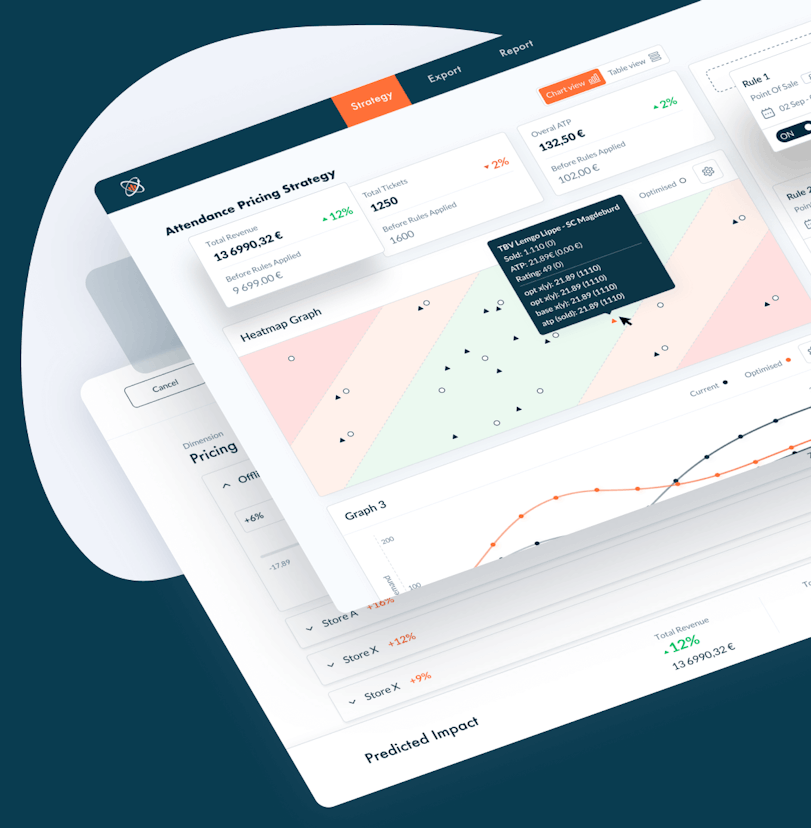
A world-class UX Agency
Get your CRM project designed by a design team who thrives in complexity.
Get a QuoteChallenges
Data Quality: Ensuring the quality of data entered into the CRM system is a common challenge. Inaccurate or incomplete data can lead to incorrect analysis and decision-making.
User Adoption: Getting employees to adopt the new CRM system can be challenging. Employees may resist change and may be reluctant to learn a new system.
Cost: The cost of implementing a CRM system can be high. This includes the cost of the software, hardware, training, and ongoing maintenance.
Customization: Every business is unique, and therefore, a one-size-fits-all CRM system may not be suitable. Customizing the CRM system to meet the specific needs of the business can be challenging and time-consuming.
Improving CRM Through Advanced Usability Testing
Advanced usability testing ensures that your CRM system is intuitive and user-friendly, reducing the risk of adoption challenges. Businesses can gain deeper insights into user behavior and improve interface design by using sophisticated techniques and tools. Let's consider some of them.
Key Techniques
1. A/B Testing
A/B testing involves presenting users with two design variations to identify which performs better. For example, you can test different dashboard layouts to determine which is easier for users to navigate.
Use case: Comparing different workflows or button placements to enhance usability and task efficiency.
2. Heatmap Analysis
Heatmaps visually represent user interactions, such as clicks, scrolls, and cursor movements, to highlight areas of high and low engagement.
Example: Identifying underutilized features on the dashboard to either redesign or reposition them for better visibility.
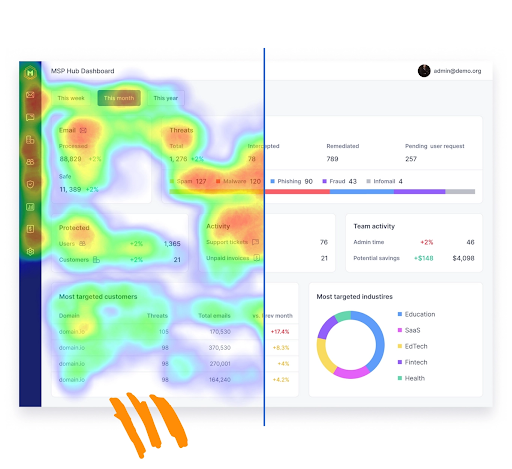
Heatmap example.
3. User Journey Mapping
Mapping the user journey across the CRM interface identifies pain points and opportunities for optimization.
Use case: Tracking how users perform specific actions, such as exporting reports or integrating third-party tools.
Customer Journey Mapping Example.
Recommended Tools for Usability Testing
Maze: Enables prototype testing and user journey tracking with actionable insights, supporting A/B tests and usability studies.
Lookback: Allows for live usability testing sessions, user interviews, and behavior analysis through recorded sessions.
Hotjar: Offers heatmaps and session recordings to visualize user behavior and discover bottlenecks.
Crazy Egg: Combines heatmaps and click analytics with A/B testing features to enhance usability.
Actionable Steps for Integration
Begin usability testing during the prototyping phase and continue post-launch for iterative improvements.
Combine A/B testing with heatmap insights to prioritize high-impact changes.
Use tools like Maze to simulate real-world use cases and collect qualitative and quantitative data from actual users.
These advanced techniques ensure your CRM is not only functional but also optimized for the best possible user experience, encouraging adoption and long-term success. Would you like deeper examples or stats on these techniques?
CRM Personalization with AI
AI-driven tools are improving CRM systems by creating personalized user experiences that cater to individual customer needs. AI can deliver insights, recommendations, and predictions that enhance customer satisfaction and business outcomes by leveraging vast amounts of data.
Key Applications of AI in Personalization
1. Recommendation Systems
AI can analyze user behavior, transaction history, and preferences to suggest tailored products or services.
Example: An AI-enhanced CRM for an online retail platform recommends products based on browsing history, increasing cross-selling opportunities.
2. Predictive Analytics
AI can identify patterns and trends to predict customer behavior, such as potential churn or purchase likelihood.
Example: Predictive models flag at-risk customers, enabling businesses to deploy retention strategies, such as exclusive discounts or outreach campaigns.
3. Dynamic Content Personalization
AI can also enable CRM systems to deliver customized marketing emails or web content.
Example: A travel CRM dynamically generates vacation package suggestions based on the user's past destinations and preferences.
Benefits of AI Personalization
Enhances customer retention by delivering relevant solutions.
Improves sales conversions through precise targeting.
Boosts operational efficiency by automating routine tasks like segmentation and recommendations.
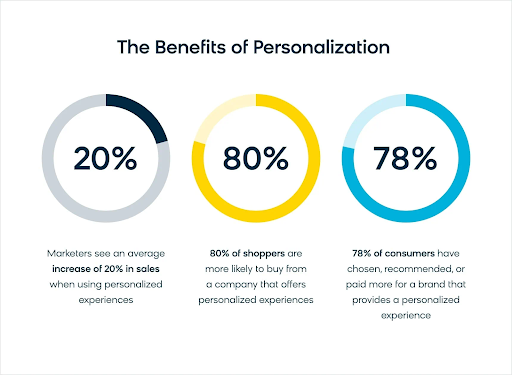
Iterative Design
Iterative design ensures your CRM adapts to evolving business requirements and user expectations, emphasizing agility and user-centric change.
Steps in an Agile Design Process
1. Prototyping
Develop prototypes, starting with low-fidelity wireframes and progressing to clickable models for user feedback.
Example: Designing a dashboard prototype to test layout efficiency with end users.
2. Testing
Conduct usability testing to identify challenges and gather actionable feedback. Techniques like moderated sessions or A/B testing can highlight critical usability gaps.
Example: Testing two different workflows for customer service ticket resolution to identify which minimizes response time.
3. Refinement
Use test data to refine and improve the CRM design, iterating until it meets both user needs and business objectives.
Example: Adjusting navigation structures based on heatmap analysis to ensure better accessibility.
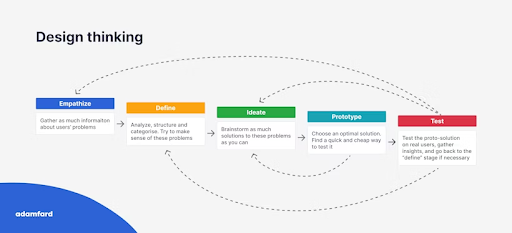
Benefits of Iterative Design
Encourages continuous improvement, accommodating feedback at every stage.
Minimizes risks of large-scale redesign by addressing issues incrementally.
Ensures the CRM remains aligned with business goals and user requirements.
By combining AI personalization with an iterative design process, businesses can develop a CRM system that is both highly effective and adaptive.
Emerging Trends in CRM Design
The landscape of CRM systems is rapidly evolving with new trends driven by advancements in artificial intelligence, voice technology, and omnichannel integration. Let’s discuss how these areas affect CRM design.
AI-Driven CRM
AI systems can be designed to automate and enhance many aspects of CRM functionality, offering intelligent insights and streamlining workflows.
Sentiment Analysis: AI algorithms analyze customer interactions to determine emotional tone and sentiment. This helps businesses understand customer satisfaction in real-time and adjust communications accordingly. For example, AI can analyze customer support tickets or social media posts to identify potential issues before they escalate, allowing for proactive service.
Automated Responses: AI chatbots and virtual assistants provide instant, context-aware responses, improving customer service speed and efficiency. For example, a CRM might deploy an AI-powered chatbot to handle frequently asked questions, freeing up human agents to tackle more complex issues.
Customer Journey Mapping: AI helps track and predict customer behavior across multiple touchpoints, offering businesses insights into where they can improve engagement. A CRM can use machine learning to predict when a customer is likely to make a purchase based on past behavior. This can lead to providing personalized recommendations and offers.
Real-world Examples
Salesforce Einstein uses AI to offer predictive analytics, sentiment analysis, and personalized customer recommendations.
HubSpot integrates AI to optimize marketing automation and customer segmentation.
Voice-activated CRMs
Voice-activated technology is making its way into CRM systems, allowing users to interact with their CRM through voice commands. This offers a hands-free, convenient experience.
Integration with voice assistants like Alexa and Google Assistant can enable CRM users to query data, add notes, and manage tasks simply by speaking.
A good use case would be sales teams using voice commands to log meeting details or retrieve customer information during calls or meetings, improving workflow efficiency.
Real World example
Salesforce has incorporated voice assistant technology with their "Einstein Voice" feature. This AI-powered virtual assistant allows users to interact with Salesforce using natural language commands.
Benefits: Voice-driven features are particularly valuable for remote workers or salespeople who need to manage their CRM while on the go. The voice interface simplifies access to important data and reduces the friction involved in manual data entry.
Omnichannel Integration
Today’s customers engage with brands across a variety of channels—email, social media, chatbots, and more. Omnichannel integration ensures that CRM systems can provide a seamless, consistent experience across all touchpoints.
Seamless Integration: CRMs are evolving to enable businesses to interact with customers across different communication platforms without losing context. For example, a customer service agent can view a customer’s past interactions across email, chat, and social media all within a single CRM interface, ensuring continuity in support.
Cross-Channel Analytics: Omnichannel CRMs allow businesses to analyze customer behavior across different platforms, providing a unified view of the customer journey. For example, data from a customer’s social media interactions, website activity, and email campaigns can be combined to create a more comprehensive understanding of their preferences.
Real-world Examples
Salesforce Service Cloud integrates omnichannel customer support, offering a unified view of interactions across email, chat, social, and phone.
Zendesk provides tools for seamless omnichannel support, helping businesses track and manage interactions across multiple channels.
These emerging trends highlight the growing importance of personalization, convenience, and continuity in CRM systems. If businesses want to offer richer, more effective customer experiences, they must learn to adopt AI-driven insights, voice interfaces, and omnichannel approaches.
New Tools and Resources
Here are some essential tools to enhance CRM design and integration:
Wireframing & Prototyping
Building a good CRM requires a modern design tool. Here are some options.
UXPilot: A comprehensive AI UX design tool that lets you generate wireframes and high-fidelity designs using text prompts. It also provides features for brainstorming, analyzing and synthesizing data, design review, and more.
Figma: A popular tool for collaborative design, allowing teams to create interactive prototypes and wireframes, perfect for CRM interface design. It also supports real-time collaboration, making it ideal for cross-functional teams.
Adobe XD: Known for its robust prototyping and wireframing features, Adobe XD is widely used in the early design phases to create detailed, interactive mockups of CRM interfaces.
Data Security
Security is extremely important. Here are tools to help you ensure the safety of your customer's data.
Okta: Provides identity and access management (IAM) solutions, ensuring secure user authentication and authorization in CRM systems. It integrates with existing platforms to maintain tight security.
Auth0: Another leading IAM solution, offering simplified login and authentication processes while securing user data. It helps protect CRM systems from unauthorized access.
API Integration
To offer a comprehensive experience, integrations play a huge role. Here are tools that can help with that.
MuleSoft: Known for its comprehensive API management capabilities, MuleSoft allows seamless integration of CRM systems with various third-party applications. It provides tools for building and managing APIs across multiple systems.
Zapier: This platform enables non-technical users to connect CRM systems with hundreds of other apps, automating workflows without complex coding. Ideal for simplifying integrations between CRM and other business tools.
These platforms will significantly streamline CRM design, enhance security, and simplify API integration, helping businesses create efficient and scalable CRM systems.
Future-Proofing Your CRM
As technology continues to evolve, future-proofing your CRM system is important to ensure it remains adaptable, secure, and aligned with upcoming innovations.
Blockchain for Secure Customer Data
Blockchain's decentralized nature holds significant potential for CRM systems, particularly in terms of security. By using blockchain, businesses can offer customers greater transparency over their data, ensuring that it remains immutable and secure from tampering or breaches. It can also streamline processes like verifying transactions or customer identities in a way that is auditable and trustworthy.
Benefits: Enhanced data integrity, transparency, and control for both businesses and customers.
Example: Companies like IBM are exploring blockchain for secure data management in customer interactions.
Modular and API-Driven Architectures
Opting for CRM systems built with modular or API-driven architectures offers greater flexibility, allowing businesses to integrate emerging technologies without needing to change the entire system. This approach also makes it easier to update, customize, and scale the CRM as business needs evolve.
Benefits: Easier integration with new tools, scalability, and adaptability to changing market demands.
Example: Systems like Salesforce and Zoho leverage modular designs and robust APIs, enabling seamless updates and integrations with third-party applications.
Conclusion
Designing a CRM system is a complex task that requires careful consideration of various factors. Understanding the needs of your audience, setting clear objectives, choosing the right technology, and implementing best practices can help create a successful CRM system. However, businesses should also be aware of the challenges that may arise during the design and implementation process and take proactive measures to address them.

